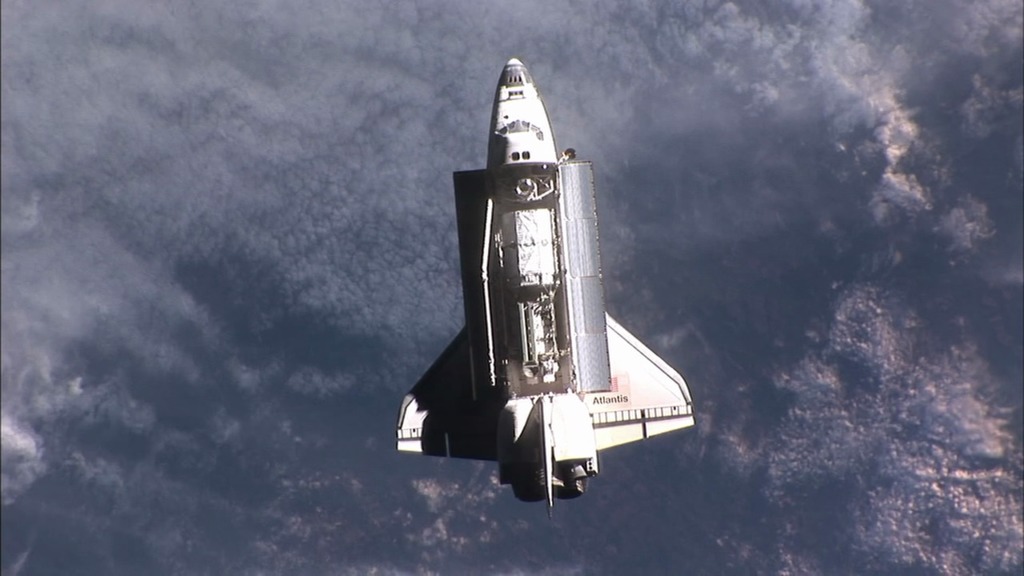The Home Frontier
Overview
Everyone knows that NASA studies space; fewer people know that NASA also
studies Earth. Since the agency's creation more than 50 years ago, NASA has
been a world leader in space-based studies of our home planet. Our mission
has always been to explore, to discover, and to understand the world in
which we live from the unique vantage point of space, and to share our newly
gained perspectives with the public. That spirit of sharing remains true
today as NASA operates 18 of the most advanced Earth-observing satellites
ever built, helping scientists make some of the most detailed observations
ever made of our world.
What is your vision of what makes NASA Earth Science inspiring? NASA's Earth Day Video Contest is your chance to create that vision. Dig around these pages below as a place to start. Find more about the contest here:
http://www.nasa.gov/topics/earth/features/earthday-vid-2012.html
Collections of Earth Imagery
- Link
- Produced Video
- Link
- Link
- Link
Animations and Visualizations
Climate Essentials
Go to this pageThis Climate Essentials multimedia gallery brings together the latest and most popular climate-related images, data visualizations and video features from Goddard Space Flight Center. For more multimedia resources on climate and other topics, search the Scientific Visualization Studio. To learn more about NASA's contribution to understanding Earth's climate, visit the Global Climate Change site.
Hurricanes and Typhoons
Go to this pageA collection of data visualizations and imagery for tropical cyclones, including hurricanes and typhoons.
For more resources, visit the links below:
NASA's Hurricane Page
2018 Hurricane Archive
Precipitation Measurement Missions' Extreme Weather Page- Link
El Niño and La Niña
A series of visualizations of data from several years of El Niño and La Niña events, including sea surface temperatures.
Go to this link Operation IceBridge - Deprecated
Go to this pageIceBridge, a NASA field campaign currently in its 11th year, is the largest airborne survey of Earth's polar ice ever flown. It will yield an unprecedented three-dimensional view of Arctic and Antarctic ice sheets, ice shelves, and sea ice. These flights provide a yearly, multi-instrument look at the behavior of the rapidly changing features of both Arctic and Antarctic ice. Data collected during IceBridge will help scientists bridge the gap in polar observations between NASA's Ice, Cloud and Land Elevation Satellite (ICESat) -- launched in 2003 -- and ICESat-2, launched September 15, 2018. ICESat stopped collecting science data in 2009, making IceBridge critical for ensuring a continuous series of observations. IceBridge uses airborne instruments to map Arctic and Antarctic areas once a year before the spring melt season takes hold. The first IceBridge flights were conducted in March/May 2009 over Greenland and in October/November 2009 over Antarctica. Other smaller airborne surveys around the world are also part of the IceBridge campaign.Photos and HD video clips
- Link
Antarctica
From snow dunes to ice shelves, our animations and videos of Antarctica are collected here. Also, check out these detailed images from the Landsat Image Mosaic of Antarctica (LIMA).
Go to this link A-Train visualizations
Go to this pageFrom Oct. 25-28, 2010, scientists from around the world gathered in New Orleans for the second-ever symposium on science born of NASA's "A-Train." The Afternoon Train, or "A-Train," for short, is a constellation of satellites that travel along the same track as they orbit Earth. Four satellites currently fly in the A-Train - Aqua, CloudSat, CALIPSO, and Aura. Three more satellites -- Glory, GCOM-W1, and OCO-2 -- are scheduled to join the configuration in 2011, 2012, and 2013, respectively. This page features a selection of some of the A-Train's "greatest hits" gathered into two sections. The first contains overview materials giving a big-picture look of the A-Train and NASA satellites. The second section contains mostly visualizations featuring a single instrument or instruments on A-Train satellites. (For the purposes of this page, each visual has been labeled with the A-Train data set it was produced from, but keep in mind, visuals are often the product of many data sets from many different satellites.) For more about A-Train constellation science, visit: http://atrain.gsfc.nasa.gov/
And for more information on the symposium: http://a-train-neworleans2010.larc.nasa.gov/
Music
- Link
Copyright Free Classical Music
A non-profit focused on improving access and exposure to music by creating free resources and educational materials. They provide recordings, sheet music, and textbooks to the public for free, without copyright restrictions, including all of the Beethoven piano sonatas.
Go to this link - Link
Moby's Free Film Music
Moby has provided a selection of tracks for filmmakers in need of free music for their independent, non-profit film, video, or short. You will need to register to download tracks.
Go to this link
Unsolicited Advice on Copyright
- Link
Code of Best Practices in Fair Use
At American University, the Center for Social Media, with the Washington College of Law, are producing tools for creators, teachers, and researchers to better use their fair use rights. May we also suggest their Code of Best Practices in Fair Use for Online Video?
Go to this link - Link
Use of NASA Imagery and the NASA Logo
In general, NASA images are not copyrighted, and are available for use for educational or informational purposes. However, the NASA logo (known as the blue "meatball" insignia) is not covered under this general permission.
Go to this link - Link
"Yes, you can!" Sometimes, it is "free use."
Peter Jaszi, professor at Washington College of Law, American University, put out a helpful guide on what falls into the category of "free use." Hint - NASA created imagery, for one.
Go to this link - Link
Is It Public Domain? A handy chart.
Professor Peter B. Hirtle has put together a chart that can help you determine if something is in the "public domain" or not.
Go to this link


























